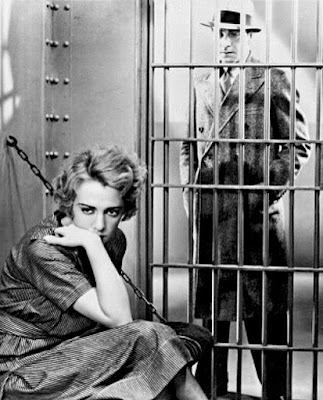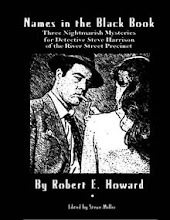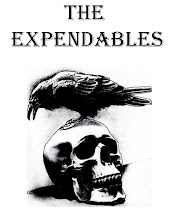In this post, I review the two lesser-known film adaptations. Both have strength and weaknesses that make them worth checking out.
The Maltese Falcon (1931) (aka "Dangerous Female" and "Woman of the World")
Starring: Ricardo Cortez, Bebe Daniels, Otto Matieson, Dudley Digges, Uma Merkel, J. Farrell MacDonald, and Thelma ToddDirector: Roy Del Ruth
Rating: Seven of Ten Stars
After his partner is murdered, private detective Sam Spade (Cortez) finds himself drawn deeper and deeper into involvement with a growing assortment of odd characters, each of whom may be the murderer, as they chase each other in search of the elusive treasure known as the Maltese Falcon.
Since both films adapt the same novels, the story lines are mostly the same, as are the characters and their relationships to each other. The films also share the similarity that the characters that come in and out of the story are more fun to try to puzzle out than the intersecting mysteries of murder and treasure hunt.
One very important difference between the films is the nature of the main character, Sam Spade. In the 1941 version, Spade is a dour, snarling man that is being worn down by the world, but in the this one, Spade smiles his way through even the most deadly of encounters, having fun laughing at danger while chasing after everyone with a nice pair of breasts. Where the later picture is film-noirish in its tone, the 1931 version hews closer to the pulp fiction stories in the magazines of the time; they were stories about tough people doing nasty things, but jokes were being cracked and lots of fun was had along the way. The two Sam Spades are the main source of these differences.
While Ricardo Cortez is the undisputed star of the film, I think Bebe Daniels (who by the time this film was made had already spent nearly two decades in front of film cameras, enjoying a career that survived not only the transition from child to adult star but also the technological leap from silent to sound films) deserved the top billing she has in this picture. She's a far more effective "mystery woman" than Mary Astor, in no small part due to the fact that there's no dancing around the fact that she uses sex and her good looks as lethal weapons. After having watched Daniels in a number of silent movies she made as a teenager--where she played everything from a loyal girlfriend, to a con-artist, to a girl coyly as much on the make as the film's male lead--it was interesting to see her play a character who is apparently rotten through and through. On many levels, the more overt approach this film has to Sam Spade's womanizing and the sexuality of the film's femme fatale makes the characters more interesting and a little deeper.
For example, the affair that Spade is having with Ida Archer, the wife of his murdered partner, is not just hinted at here; it's out in the open, and it's used more effectively as a plot point and as a looking into the nature of the characters than in the 1941 version. At one point, Spade treats Ida Archer extremely coldly, given the affair, and depending on how you choose to interpret that in the context of when he's doing it, it shows that there's a truly vile human being hiding behind that broad smile, or Spade is just as devious and calculating as the crooks he is trying to deal with throughout the picture. (Personally, I like to think it's the latter, a notion I'll come back to below.)
I found this to be a very entertaining movie when taken on its own terms. When compared to the 1941 version, the supporting cast can't hold a candle to their counterparts, with the exception of Effie the Secretary; I really enjoyed Uma Merkel. Thelma Todd is more memorable than the Ida Archer in the 1941 version, but that's more because her relationship to Spade is more blatant than anything she does as an actress here.
One part of the film that I initially didn't like, but which grew on me as I thought about it, was the final scenes between Spade and the "dangerous female", Wonderly. My initial reaction to the film's wrap-up was that it was another one of those Hollywood insta-romances that have spoiled so many otherwise good movies for me... but then it dawned on me that there was more to the scenes than that. It struck me that those closing interactions between the two characters were a redemption of sorts--their sexual fling had reawakened some of the humanity that they had buried deep within themselves, and despite their natures, they had actually connected on a real and emotional level. Ultimately, it was too late for either character to derive any happiness from this realization, as the many lies and deceptions they engaged obscured their emotions even from themselves. (Cortez's expression when the truth about where he and Wonderly truly stand with one another is probably the best bit of acting he does in the entire film.)
Starring: Warren William, Bette Davis, Marie Wilson, Porter Hall, Arthur Treacher, Maynard Holmes, and Alison Skipworth
Director: William Dieterle
Rating: Five of Ten Stars
A womanizing, crooked private eye (William) re-connects with his ex-partner (Hall) in time to start a new scam. Things quickly turn deadly as a woman as corrupt as he is (Davis) draws him into a murderous struggle over an 8th century artifact that legends hold is full of jewels.
"Satan Met a Lady" is one of three adaptations from Warner Bros. of Dashiell Hammett's "The Maltese Falcon", coming between "The Maltese Falcon" (1931) and "The Maltese Falcon" (1941). It's both the one that's furthest afield from the source material as well as the weakest. The weaknesses don't arise so much from seemingly arbitrary cosmetic changes (the criminal mastermind is a fat woman instead of a fat man, the treasure-stuffed McGuffin is a drinking horn instead of a falcon sculpture, the Sam Spade character is named Ted Shane, and so on), but from the characters and even some of the characterizations and the fact that this is either a comedy that's for the most part unfunny, or a mystery that's not terribly engaging..
The biggest problem with "Satan Met a Lady" is its 'hero', Ted Shayne (played by Warren William). Shayne is a man with absolutely no redeeming qualities--he's self-centered, arrogant, lazy, completely untrustworthy, and not half as witty as he thinks he is, and nowhere near as charming and handsome as the script makes all the ladies in the film think he is. Shayne such an unpleasant character that my favorite part of the film is the ending, which I won't comment on, because it'll spoil some of the few truly good minutes of the film.
It's a shame that the script isn't better--with either sharpened comedy or dramatic tension, and with more sensible reactions from most of the female characters, and at least one redeeming quality given to Shayne--because every cast member makes a fine accounting of themselves, given the shoddy material they are working with.
William and Bette Davis are especially fun to watch together, since we have two perfectly cast actors, playing two equally vicious characters who recognize each other as the villains they are, and who know that each is just looking for a chance to mess with the other. If the script had been better, I suspect these scenes could have been absolutely brilliant.
As for "Satan Met a Lady", it's not a terrible film... it's just not very good. It's not going out of your way for. However, it's included in the three-disc Special Edition of The Maltese Falcon, together with the two good versions. In that case, it's an inoffensive "bonus" feature that you save for that day when you've got nothing else to watch.
You can get all three versions "The Maltese Falcon" and some great bonus features in the two-disc set The Matese Falcon: Special Edition. It's a great value, and I think it's a set any lover of classic mystery movies will enjoy.























